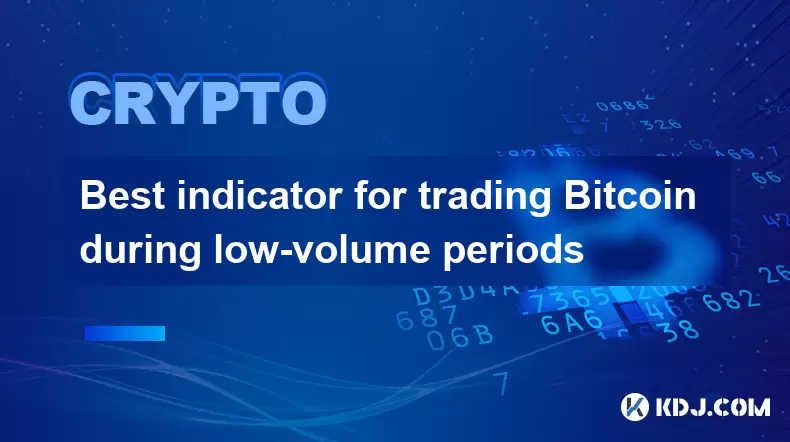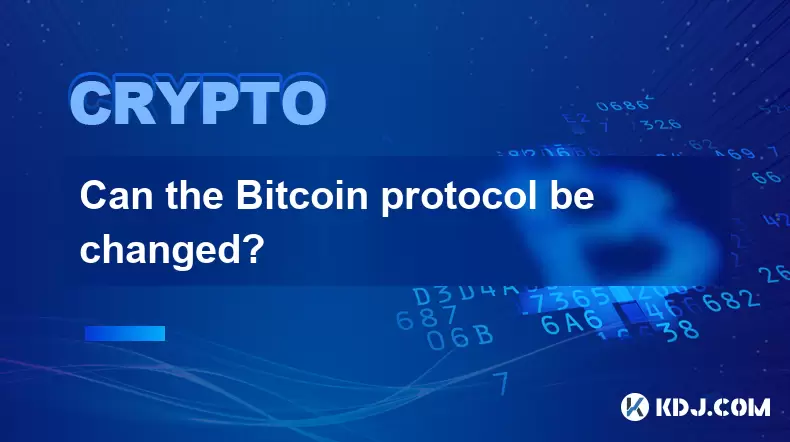-
 bitcoin
bitcoin $123963.239194 USD
1.37% -
 ethereum
ethereum $4529.082464 USD
1.07% -
 xrp
xrp $2.983640 USD
0.71% -
 tether
tether $1.000287 USD
0.02% -
 bnb
bnb $1179.874393 USD
2.99% -
 solana
solana $230.633678 USD
1.55% -
 usd-coin
usd-coin $0.999835 USD
0.03% -
 dogecoin
dogecoin $0.254240 USD
1.34% -
 tron
tron $0.341176 USD
0.15% -
 cardano
cardano $0.842285 USD
0.52% -
 hyperliquid
hyperliquid $48.537896 USD
-0.86% -
 chainlink
chainlink $21.863092 USD
-0.84% -
 ethena-usde
ethena-usde $0.999743 USD
-0.07% -
 sui
sui $3.579561 USD
-0.18% -
 stellar
stellar $0.403418 USD
2.67%
Best indicator for trading Bitcoin during low-volume periods
During low-volume Bitcoin trading periods, rely on VWAP, OBV, and order book analysis to spot hidden opportunities and avoid false signals from traditional indicators.
Jul 06, 2025 at 10:21 am

Understanding Low-Volume Periods in Bitcoin Trading
During low-volume periods, the trading activity of Bitcoin significantly decreases, which can make it challenging for traders to identify reliable market trends. These periods often occur during weekends, holidays, or times when major global markets are closed. In such environments, traditional indicators like moving averages or RSI may produce false signals due to reduced liquidity and increased price volatility.
It's crucial to understand that low volume doesn't mean low opportunity—rather, it requires a different analytical approach. Traders must adapt their strategies and focus on indicators that perform well under these conditions to avoid unnecessary losses and improve decision-making accuracy.
Why Standard Indicators Fail During Low Volume
Many commonly used technical indicators, such as the Relative Strength Index (RSI) or Moving Average Convergence Divergence (MACD), rely heavily on consistent volume data to generate accurate signals. However, during low-volume phases, these tools can become unreliable:
- False crossovers in MACD may appear more frequently.
- RSI divergence can mislead traders into premature entries or exits.
- Price gaps caused by thin order books can distort trendlines and support/resistance levels.
These issues arise because volume is a key component in confirming price movements. Without sufficient participation from market participants, even minor trades can cause exaggerated price swings, making standard analysis less effective.
Best Indicator: The Volume Weighted Average Price (VWAP)
One of the most effective indicators for Bitcoin trading during low-volume periods is the Volume Weighted Average Price (VWAP). Unlike simple moving averages, VWAP incorporates both price and volume, providing a more accurate reflection of average value over time.
Here’s how to implement VWAP effectively:
- Set VWAP on your chart: Most modern trading platforms like TradingView or Binance allow you to add VWAP directly.
- Use it as a benchmark: When Bitcoin trades above VWAP, it suggests bullish momentum; trading below indicates bearish sentiment.
- Combine with price action: Look for confluence between VWAP and candlestick patterns to confirm potential reversals or continuations.
Because VWAP dynamically adjusts based on volume and price, it remains relatively stable even during quiet market hours, offering more reliable insights than other lagging indicators.
Alternative Tools: On-Balance Volume (OBV) and Order Book Analysis
While VWAP is highly effective, combining it with On-Balance Volume (OBV) and order book analysis can enhance your strategy further during low-volume sessions.
On-Balance Volume (OBV) tracks cumulative buying and selling pressure by adding volume on up days and subtracting it on down days. Even if overall volume is low, OBV can detect subtle shifts in sentiment:
- Rising OBV confirms strength behind price increases.
- Falling OBV warns of hidden selling pressure despite sideways movement.
Order book analysis, although not a traditional indicator, allows traders to observe real-time supply and demand imbalances. During low-volume times, large orders placed far from the current price can signal institutional interest or potential breakouts.
To use this method:
- Monitor bid-ask spreads for sudden expansions or contractions.
- Watch for deep liquidity pools forming at specific price levels.
- Identify whale movements through unusual order placements.
These methods provide early warnings about possible price direction changes, even when the broader market seems stagnant.
Practical Steps to Trade Bitcoin Using These Indicators
Successfully applying these tools during low-volume Bitcoin trading sessions requires precise execution. Follow these steps:
- Enable VWAP and OBV on your trading platform. Ensure they're correctly configured to match your chart timeframe.
- Identify consolidation zones where Bitcoin has been range-bound. These areas often precede breakouts.
- Observe VWAP proximity: If price hovers near VWAP without strong momentum, prepare for a potential breakout.
- Cross-reference with OBV: A rising OBV during consolidation suggests accumulation, increasing the chance of an upward move.
- Check the order book: Use depth charts to see if large buy or sell walls are forming, indicating hidden intentions of big players.
- Place limit orders strategically: Instead of chasing the market, anticipate breakouts by placing orders just beyond identified resistance or support levels.
By integrating VWAP, OBV, and order book analysis, traders can maintain a competitive edge even during the least active trading hours.
Frequently Asked Questions
Q1: Can I use VWAP on all timeframes during low-volume periods?Yes, VWAP can be applied across multiple timeframes. However, higher timeframes like 4-hour or daily charts tend to offer more stable VWAP readings during low-volume periods compared to shorter intervals like 5-minute or 15-minute charts.
Q2: Is OBV reliable when volume is extremely low?While OBV can still provide useful insights, its reliability diminishes when volume drops to negligible levels. In such cases, cross-checking with order book dynamics becomes essential to avoid misleading signals.
Q3: How do I differentiate between normal and abnormal order book activity?Abnormal activity usually involves large orders appearing suddenly or significant imbalance between bids and asks. Normal order books show gradual changes and balanced liquidity distribution around the current price.
Q4: Should I avoid trading Bitcoin entirely during low-volume periods?Not necessarily. While risks increase, opportunities also exist for those who know how to interpret the right indicators. Using VWAP, OBV, and order book tools helps navigate these periods with greater confidence.
Disclaimer:info@kdj.com
The information provided is not trading advice. kdj.com does not assume any responsibility for any investments made based on the information provided in this article. Cryptocurrencies are highly volatile and it is highly recommended that you invest with caution after thorough research!
If you believe that the content used on this website infringes your copyright, please contact us immediately (info@kdj.com) and we will delete it promptly.
- BlockDAG, DOGE, HYPE Sponsorship: Crypto Trends Shaping 2025
- 2025-10-01 00:25:13
- Deutsche Börse and Circle: A StableCoin Adoption Powerhouse in Europe
- 2025-10-01 00:25:13
- BlockDAG's Presale Buzz: Is It the Crypto to Watch in October 2025?
- 2025-10-01 00:30:13
- Bitcoin, Crypto, and IQ: When Genius Meets Digital Gold?
- 2025-10-01 00:30:13
- Stablecoins, American Innovation, and Wallet Tokens: The Next Frontier
- 2025-10-01 00:35:12
- NBU, Coins, and Crypto in Ukraine: A New Yorker's Take
- 2025-10-01 00:45:14
Related knowledge

Why is Bitcoin considered a revolutionary technology?
Aug 12,2025 at 08:29pm
Decentralization and the Elimination of Central AuthoritiesThe core innovation behind Bitcoin lies in its decentralized architecture, which fundamenta...

Why is Bitcoin considered a revolutionary technology?
Aug 10,2025 at 07:42pm
Decentralized Architecture and Trustless TransactionsBitcoin is considered revolutionary because it introduced a decentralized architecture that opera...

What are the key features of Bitcoin?
Aug 10,2025 at 02:50am
Decentralization and Peer-to-Peer NetworkOne of the most defining characteristics of Bitcoin is its decentralized nature. Unlike traditional financial...

Can the Bitcoin protocol be changed?
Aug 07,2025 at 01:16pm
Understanding the Bitcoin ProtocolThe Bitcoin protocol is the foundational set of rules that govern how the Bitcoin network operates. It defines every...

Can the Bitcoin protocol be changed?
Aug 11,2025 at 01:01am
Understanding the Bitcoin Protocol StructureThe Bitcoin protocol is the foundational set of rules that govern how the Bitcoin network operates. These ...

What happens to Bitcoin transactions once they are confirmed?
Aug 09,2025 at 05:22am
Understanding Bitcoin Transaction ConfirmationWhen a Bitcoin transaction is initiated, it is broadcast to the network and placed in a pool of unconfir...

Why is Bitcoin considered a revolutionary technology?
Aug 12,2025 at 08:29pm
Decentralization and the Elimination of Central AuthoritiesThe core innovation behind Bitcoin lies in its decentralized architecture, which fundamenta...

Why is Bitcoin considered a revolutionary technology?
Aug 10,2025 at 07:42pm
Decentralized Architecture and Trustless TransactionsBitcoin is considered revolutionary because it introduced a decentralized architecture that opera...

What are the key features of Bitcoin?
Aug 10,2025 at 02:50am
Decentralization and Peer-to-Peer NetworkOne of the most defining characteristics of Bitcoin is its decentralized nature. Unlike traditional financial...

Can the Bitcoin protocol be changed?
Aug 07,2025 at 01:16pm
Understanding the Bitcoin ProtocolThe Bitcoin protocol is the foundational set of rules that govern how the Bitcoin network operates. It defines every...

Can the Bitcoin protocol be changed?
Aug 11,2025 at 01:01am
Understanding the Bitcoin Protocol StructureThe Bitcoin protocol is the foundational set of rules that govern how the Bitcoin network operates. These ...

What happens to Bitcoin transactions once they are confirmed?
Aug 09,2025 at 05:22am
Understanding Bitcoin Transaction ConfirmationWhen a Bitcoin transaction is initiated, it is broadcast to the network and placed in a pool of unconfir...
See all articles










































































